Tales From FNR with Professor Emeritus Bill Hoover
Before embarking on a 40-plus year career guiding students and constituents across the state on the topics of timber tax and forest economics, becoming known as the Purdue Forestry and Natural Resources historian or pitching in on various community projects to promote forest maintenance and recreation, Dr. Bill Hoover began his career of service in the U.S. Army Corps of Engineers as a basic training officer and later a combat engineering battalion operations officer in Vietnam.
Hoover grew up with military men on both sides of his family and was mentored by several World War II veterans as a member of the Boy Scouts.
“Most of my Boy Scout leaders took it as their role to prepare us for military service,” Hoover explained. “Attending Penn State, a land grant college, meant I was required to take ROTC courses and drills for two years. Advanced ROTC seemed like the logical choice since serving as an officer was better than as an enlisted grunt.”
After graduating from Penn State in December 1966 with his bachelor’s degree in forest management and a commission as a second lieutenant reserve officer in the U.S. Army, Hoover reported for training in Ft. Belvoir, Virginia, where he learned to be a combat engineer junior officer. From there, he moved on to Ft. Lewis, Washington, where he taught classes on all phases of military life and supervised enlisted officers, and finally to the Mojave Desert, where he participated in training evaluation. Just after Christmas in 1967, Hoover deployed to Vietnam as a combat engineer in the 39th engineer battalion, 18th engineer brigade.
Just over a year later, Hoover returned home on Dec. 29, 1968, and was relieved from active duty two weeks later. Months later, he was awarded a Bronze Star for Meritorious Service for his efforts, which included everything from construction of bunkers and other structures to bridge building and culvert replacements, supervision of material distribution to field companies, and daily mine sweeps.
“I don’t remember ever firing my weapon. I learned to work with men in tough situations and I experienced a new culture,” Hoover said. “The recommendation from the Battalion Commander got me into graduate school at Penn State, not my academic record. The GI Bill with the assistantship provide sufficient income to lead a pleasant life in State College. I didn’t use up the GI Bill benefit until my first year at Iowa State University for my PhD program.”
In 1974-75, an influx of talent joined the FNR faculty ranks. Joe O’Leary, Harmon “Mickey” Weeks, Harvey Holt, Ann Spacey and Bill Hoover were all hired that year and all would go on to join the ranks of FNR’s professor emeritus list.
“Mr. Bill Hoover, a candidate for the PhD in economics from Iowa State, joined the faculty as a teacher and research in forest economics with a specialization in econometrics,” first year department head Mason Carter said in his opening letter of the 1975 FNR Log book.
research in forest economics with a specialization in econometrics,” first year department head Mason Carter said in his opening letter of the 1975 FNR Log book.
While Hoover may have been hired for his knowledge of econometrics, or the application of statistics and economic models, he would make his impact on the department in other ways.
“My value appeared to be in other places and I was hired to work with the folks in the wood research lab in marketing and feasibility studies working with Carl Eckelman on laminated veneer lumber and Mike Hunt on composite panels,” Hoover said. “The nature of the work was to identify potential markets, help design a product that would best serve those, produce samples, test them and give samples to potential use adopters. Laminated veneer and lumber type products were less common at the time. The price of lumber got high enough that substitute products made sense and I did economic feasibility studies for the manufacturers of the products.”
Hoover’s name also became synonymous with wood products throughout the state of Indiana through his production of the Indiana Forest Products Price Report, a yearly publication he undertook his second year at Purdue and continued until he handed it off to the Indiana Division of Forestry upon his retirement in 2013. The later-defunct publication is currently being revived in a virtual format by Dr. Mo Zhou.
“It was a survey of mills,” Hoover explained. “It was a questionnaire asking for the prices they paid for delivered logs for a wide variety of species, for sawed logs of four grades and of veneer logs of five species and two grades. It was done in cooperation with Ag statistics. I maintained the mailing list and they mailed it out. It had increased validity come from that group.”
Hoover’s involvement with timber taxes was another service to landowners that made a difference in the forestry landscape of the state.
“Early on, Mason Carter said you need to find a reason to convince forest land owners that they should manage their timber, and for some reason I thought about taxes,” Hoover said. “I started investigating the information that was available for timber taxes, which have to do with income and estate taxes that apply to owners of timberland. I discovered that the U.S. Forest Service had started an initiative and had been publishing some ag handbooks on that topic. But when the gentleman who was doing it retired, nobody picked it up. A USFS state and private forestry representative attended a tax workshop I presented in Indianapolis. At the end of the workshop, he invited me to take over the publication of the Ag Handbook approved by the IRS. Since I was working in Washington D.C. on sabbaticals, I also contacted the Forest Industries Committee on Timber Valuation and Taxation (FICTIV), which was essentially the lobbying group for the timber industry with the Internal Revenue Service, the U.S. tax code and the relationship with Congress.
approved by the IRS. Since I was working in Washington D.C. on sabbaticals, I also contacted the Forest Industries Committee on Timber Valuation and Taxation (FICTIV), which was essentially the lobbying group for the timber industry with the Internal Revenue Service, the U.S. tax code and the relationship with Congress.
“I did three sabbaticals in Washington D.C. and they all had to do with taxes. The first one with the Forest Service I was just getting started in the timber tax field. The next one was with FICTIV, located in a law firm in downtown D.C., and I worked during the day at the Forest Service and over at FICTIV at night. I took over the timber tax journal, which was an annual update of changes in law and was a survey of property tax provisions in the states. I restarted the Ag Handbook, then I published a manual of my own (Timber Tax Management for Family Forest Owners), and I was invited pretty much all over the country to do workshops on timber tax.”
In the classroom, Hoover took over the forest economics course from Professor Callahan, who had retired, and also was responsible for a forest finance course.
“I really enjoyed working with the undergrad students in the forest economics course,” Hoover said. “A lot of them found the course challenging because the approach to problem solving was not something that they had dealt with before. It was pretty much management economics, decision making and how to take the resources that are available and analyze alternative uses financially/economically and decide what the best use is.
“I had a close personal relationship with all of my students and told them to come to my office or email/call whenever. I tried to make sure they knew about it when they did well on exams, and to work with them if they were having problems in an area. I tried to interject humor whenever I could, but keeping myself accessible is what helped the most. When I am out in the state with SAF meetings, I interact with former students that are now in the profession as consulting foresters or with the division of forestry, etc. Them being successful is what you hope for, what you look for and what makes you feel good.”
Tamara Benjamin, program manager for Agriculture, Food and Natural Resources with the University of Minnesota Extension office, said her career direction was heavily influenced by her relationship with Hoover and his mentoring.
“The first time I met Bill was on a very hot July afternoon when I drove to Indiana with my mom from Minnesota to interview with him for a graduate student position,” Benjamin recalled. “I was very intimidated since I had never really studied economics and I was going to be getting my degree in Forest Economics. To be honest, I was scared to death walking into his office and he was his typical “grumpy” self, but that didn’t sway me from getting to know him and finding out he was one of the kindest, most giving humans I have ever met. As a professor, he was willing to throw anything my way to keep me learning and interested. Everything I know about economics now is because of his genuine love for wanting to make his students learn. He helped me understand how critical understanding economics (global, national, state, local) is for everything we do.
“My future career ended up heading south to Costa Rica for 12 years and then back to Indiana for the next 10 years. I am happy to say that much of that time was guided by Bill. He and I spent some time in Honduras and Costa Rica in the beginning of my job at Purdue in 2000. We worked on a project that was looking at alternative products for landowners in an area that was heavily impacted by a hurricane that had hit Honduras. I also came back to Indiana to work in extension, mainly because he was such a proponent of working directly with stakeholders. I am still working in Extension, mainly because of my desire to see how research and education at land grant Institutions can support and help our local communities. Bill has always supported Extension, winning one of the career faculty awards in this during his final years at Purdue. I can’t imagine my career without Bill and his guidance towards supporting local landowners and communities.”
In addition to their professional relationship, Benjamin said Hoover became a constant presence in her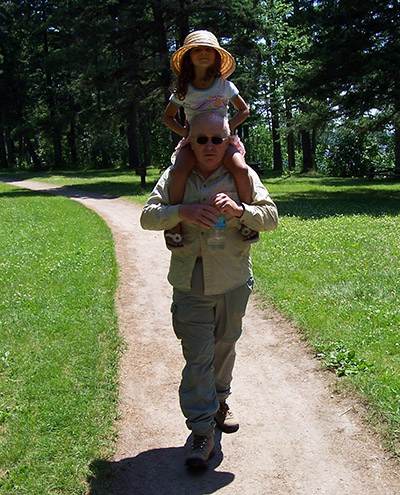 personal life as well.
personal life as well.
“I adopted Bill and his family as my own early in my graduate career. He became a dad to me and a grandpa to my children,” Benjamin shared. “He was the first person to my hospital room after my oldest was born (other than my husband). I am blessed to have him in my and my family’s life. Our holidays are spent with his family and my children look to him for guidance with their professions. I can’t imagine what my life would have been without Bill encouraging, guiding, pushing, supporting, and challenging me. I truly had the best graduate student advisor, friend, and adopted family member when I met Bill.”
Jim Ringe, who retired as a professor emeritus at the University of Kentucky in 2022, recalled his time working under Hoover as a PhD student from 1979 to 1983.
“When I look around at how some PhD students are now thrown into a "sink or swim" environment, I am happy to say that this was not my experience at Purdue,” Ringe said. “Yes, work had to be done and standards had to be met, but I was truly mentored by Bill and the other professors on my committee (including Mike Hunt, Carl Eckelman and Stan Suddarth). Bill took a genuine interest in me and worked hard to guide me to where I needed to be. He had the ability to point me in a general direction without too many details and then let me go off and figure things out. It taught me to really think, investigate, use available resources and work out solutions to problems. And, if I really got stuck, Bill was always there to help me out with more guidance, a gentle nudge, or a swift kick in the pants; he could tell what was needed. I can never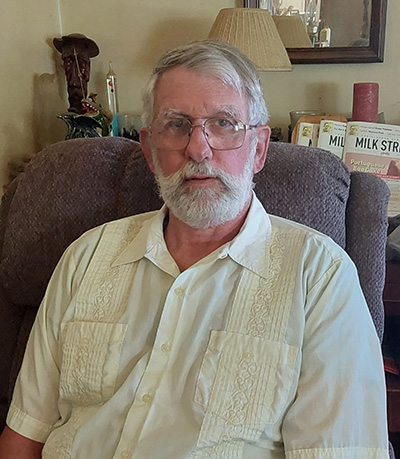 thank him enough for this sort of training as it prepared me very well for my academic career and proved quite useful in my dealings with students at UK. Part of Bill lives on in me and, by extension, in all of the students I taught over the last 39 years.
thank him enough for this sort of training as it prepared me very well for my academic career and proved quite useful in my dealings with students at UK. Part of Bill lives on in me and, by extension, in all of the students I taught over the last 39 years.
“Additionally, Bill guided me into numerous courses I would never have considered on my own - three more semesters of calculus, probability (the hardest course I ever took by far), accounting, marketing, product management, materials engineering and industrial engineering. These all opened my eyes to a new and exciting world. More importantly, they allowed me to see the world of forestry as an interrelated system from growing trees to raw wood, to engineered final products that are bought and sold in an economic world. This was very useful in the research component of my career and proved invaluable in the heavy teaching load that constituted the latter half of my career.”
Liz Jackson, current executive director of the Indiana Forestry and Woodland Owner’s Association and the Walnut Council, said Hoover’s impact on her career lasted well beyond her days as a master’s student.
“I owe much of my career path to Bill Hoover’s mentorship. Not only was he a constant presence in my undergraduate studies in Forestry (Wood Products option), but he helped steer me to a master’s degree in Business Management/Industrial Forestry and served as my advisor and mentor,” said Jackson, a 1982 forestry alumna who completed her master’s in management from Krannert in 1984. “His interests lit a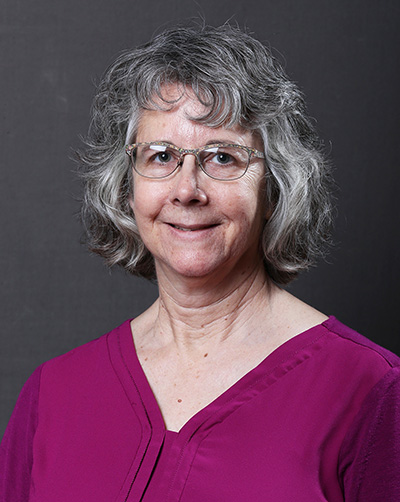 passion in me and led to my successful career in the wood products industry. Later, Dr. Hoover saw a new position open up in Purdue FNR and recommended me for the job. This has led to almost 20 years in the department in a role that I have truly enjoyed. I know that many of his students can relay those kinds of stories, even after decades away he is always looking out for his students and helping them excel.”
passion in me and led to my successful career in the wood products industry. Later, Dr. Hoover saw a new position open up in Purdue FNR and recommended me for the job. This has led to almost 20 years in the department in a role that I have truly enjoyed. I know that many of his students can relay those kinds of stories, even after decades away he is always looking out for his students and helping them excel.”
Brian Miller, who received his wildlife degree in 1980, his master’s in 1983 and PhD in 2003, spent several years as a staff member in FNR as a wildlife extension specialist, the director of Forestry Summer Camp and later as an as outreach coordinator and associate director of Illinois-Indiana Sea Grant. Miller, who retired in 2018 after a 10-year stint as the director of the Sea Grant program, had the unique experience of knowing Hoover as both a faculty member and a colleague.
“I left in 1983 and went to be a biologist in Connecticut, and came back as an A/P staff member,” Miller said. “I was the wildlife extension specialist in the department starting in 1988 and also the director of Forestry Summer Camp and that's when I really started interfacing a lot with Bill. He served as a great mentor in how to work with students, and how to teach effectively, and I always really appreciated that. At that same time. I also had an extension appointment, as did Bill. He was an active member on the Purdue Land Use team at the time, and he encouraged me to be a land use team member as well, and we partnered together on a number of land use issues with wildlands in the state. In that capacity I learned a lot about how to work with not only extension educators and counties, but also how to work on issues that could be kind of contentious. It really helped me figure out how to facilitate and operate in those kinds of environments and understand the motivating factors for various groups, what their concerns were and how to help address them.
partnered together on a number of land use issues with wildlands in the state. In that capacity I learned a lot about how to work with not only extension educators and counties, but also how to work on issues that could be kind of contentious. It really helped me figure out how to facilitate and operate in those kinds of environments and understand the motivating factors for various groups, what their concerns were and how to help address them.
“At some point, I decided while I was working full time to pursue my PhD and Bill offered to take me on as his student. He had this very small course, the Economics of Property Rights, that really helped me change how I looked at a lot of these land use issues and help me understand how various people approach them, and what their motivations are for their properties, and how they make their decisions. That was really key for me in conducting my research, and it was something I carried with me. During my entire career at Purdue, I always saw Bill as a mentor and someone that really helped me shape how I operated as a camp director, as an extension professional and as a scientist.”
Hoover was named as FNR’s Exemplary Faculty Service Award honoree in 2012. The award now bears his name, the William L. Hoover Exemplary Faculty Service Award.
In addition to acting as a professor of forest economics for nearly 40 years (1974 to 2013), Hoover became the de facto FNR historian.
Curious who was the first professor at Purdue to teach forestry related courses, the first female to graduate with a forestry degree or FNR’s first female faculty member? (Stanley Coulter, Barbara May Cuppy and Anne Spacey respectively) If you have a question about the history of Purdue FNR, Hoover is the man to call. When the centennial came around in 2013, it was Hoover who put together information on the department’s history and gave a talk at the centennial dinner.
“I’ve always been interested in history and I started to find out things that nobody ever talked about before,” Hoover explained. “I thought it was important to go back and see how things started in forestry at Purdue and how the forestry movement started and developed in the state. One of my pet peeves is that we have never fully recognized the professor that started the forestry program at Purdue University, Stanley Coulter. Dean Coulter was the first one to teach a forestry course and it is his work that evolved into a full-blown forestry program in the School of Agriculture. I’m pretty good at digging up information. If I haven’t gotten it all out and published by then, I hope somebody will take all of my files and do something when I die.”
Dr. Rob Swihart, who has been a professor in FNR since 1998 and acted as department head from 2004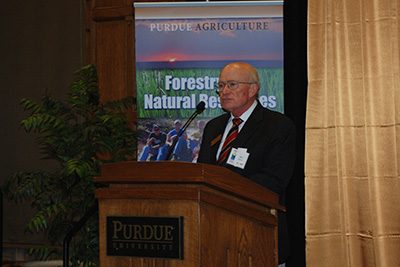 to 2016, said Hoover has been and continues to be an invaluable resource for the department.
to 2016, said Hoover has been and continues to be an invaluable resource for the department.
“Bill’s historical knowledge of our department is unparalleled, and he was instrumental in documenting and sharing that history with students, faculty, alumni and friends during our centennial celebration,” Swihart said. “As an emeritus professor he continues to promote a greater appreciation of our academic roots in natural resources.”
Although Hoover retired before Dr. Bob Wagner came in as the department chair in 2016, his knowledge and efforts were significant in helping Wagner and future generations understand FNR’s past.
“When I was a new department head for FNR, I very much appreciated Dr. Hoover’s invaluable insight and familiarity with the history of FNR, especially as it helped me understand how things came to be over time,” Wagner said. “Dr. Hoover also was particularly valuable in his efforts to assemble and catalog hundreds of historic photos from the department as well as Indiana forestry. Many of these photos were so beautifully archived that the Purdue Library took them into their archives where they reside today.”
In retirement, Hoover also remains staunch in his commitment to service and to maintaining and reclaiming the community’s forested areas.
He works with the Lafayette Department of Parks and Recreation on Berlovitz Woods, located at the corner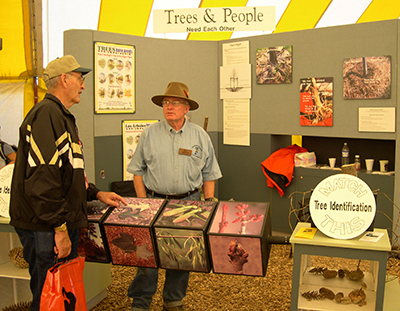 of Veterans Memorial Parkway and McCarty Lane. The heavily grazed oak/hickory forest had become overrun with invasive species and black cherry trees over the years. Hoover has been working on thinning out the black cherry and Amur honeysuckle and planting trees, trying to establish oak trees around the wetland onsite.
of Veterans Memorial Parkway and McCarty Lane. The heavily grazed oak/hickory forest had become overrun with invasive species and black cherry trees over the years. Hoover has been working on thinning out the black cherry and Amur honeysuckle and planting trees, trying to establish oak trees around the wetland onsite.
Hoover also works on a 135-acre, mostly wooded property at the Franklin L. Cary Camp run by the Sagamore Council of the Boy Scouts of America, focusing on safety, invasives control and traditional timber management.
“Professor emeritus Bill Hoover is an integral part of caring for the historic Cary Camp property,” Cary Camp Ranger Becky Wellner said. “He regularly marks and fells dangerous trees so scouts can enjoy the woods safely. After storms he helps clear fallen debris, and is always looking for ways to improve the timber stand by planting new trees and selective harvesting. He is tenacious in his fight against invasive species and spent most of the COVID shutdown hand-pulling burning bush in a beloved spot near our creek. He spearheaded the establishment of our 20-acre prairie and continues to work towards its full potential. Bill is a huge part of camp and the scouts are forever grateful for his leadership.”
spearheaded the establishment of our 20-acre prairie and continues to work towards its full potential. Bill is a huge part of camp and the scouts are forever grateful for his leadership.”
Hoover’s involvement in Scouts dates back to his son’s youth and continues with his daughter and grandchildren.
“I have been involved with a troop in town since my son was a Cub Scout and now I am the liaison between the chartering organization and the troop,” Hoover shared. “My involvement at the camp came about because I was going out there with my son and saw all kinds of stuff that needed done and I just couldn’t resist the opportunity to be of help. The best thing that has happened is my daughter Monica has gotten interested in scouts too.”
The third property that occupies Hoover’s time is a historic apple farm at Prophetstown State Park, a passion project relating back to his youth.
“My father’s home place was in the orchard country of Pennsylvania and we always paid homage to apples, travelled there to get apples in apple season and peaches in peach season, etc.,” Hoover said. “So, I was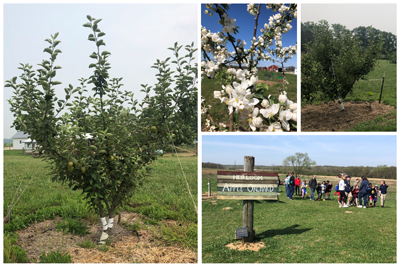 receptive to the offer to have that land to start an heirloom apple orchard. I am praying someday somebody out there will be able to take over the management of it, but so far it has been successful.”
receptive to the offer to have that land to start an heirloom apple orchard. I am praying someday somebody out there will be able to take over the management of it, but so far it has been successful.”
Robin Anderson, events and education coordinator at The Farm at Prophetstown State Park, detailed Hoover’s impact on the farm and orchard.
“Bill Hoover has been volunteering his time and expertise, as well as donating his resources, to the Farm at Prophetstown since 2018, continuing for over 5 years now,” said “His focus has been the establishment and maintenance of our Heirloom Apple Orchard, which consists of 39 trees and 29 different varieties. His work has been incredibly beneficial to the Farm and our mission to preserve the memory of historic agriculture while providing education for the community.”
Hoover also remains connected to his FNR roots through weekly coffee gatherings with his former colleagues and fellow professor emeritus honorees from within the department as well as some from agronomy and entomology.
“We used to take coffee breaks where pretty much everyone in the department went over to the home economics building. We also used to have department Christmas parties at somebody in the department’s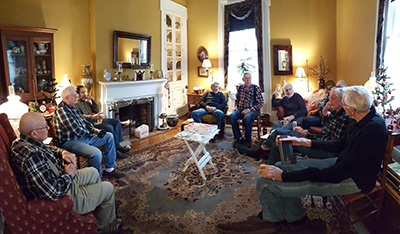 house,” Hoover explained. “There were never any conflicts. We all accepted each other’s little niche and tried to be cooperative and it made for a very good working environment. It’s probably one of the big reasons I stayed on here forever. We still have that old family environment and keep track of what everybody is doing and their travels, but mostly we talk about current developments in the field and what we’re doing in the way of interacting with good old mother nature.”
house,” Hoover explained. “There were never any conflicts. We all accepted each other’s little niche and tried to be cooperative and it made for a very good working environment. It’s probably one of the big reasons I stayed on here forever. We still have that old family environment and keep track of what everybody is doing and their travels, but mostly we talk about current developments in the field and what we’re doing in the way of interacting with good old mother nature.”
When he isn’t out in the woods working or talking about natural resources with whomever will listen, Hoover spends time with his family, including his wife, Peggy Jo (née Spangler) who worked as a clerical support staff member for the wildlife faculty from 1973 to 1976, the couple’s three children (Jennifer, Monica and Sam) and two granddaughters (Brielle and Samanth Marmolejos). Hoover also is involved with his church, helping with landscaping.






